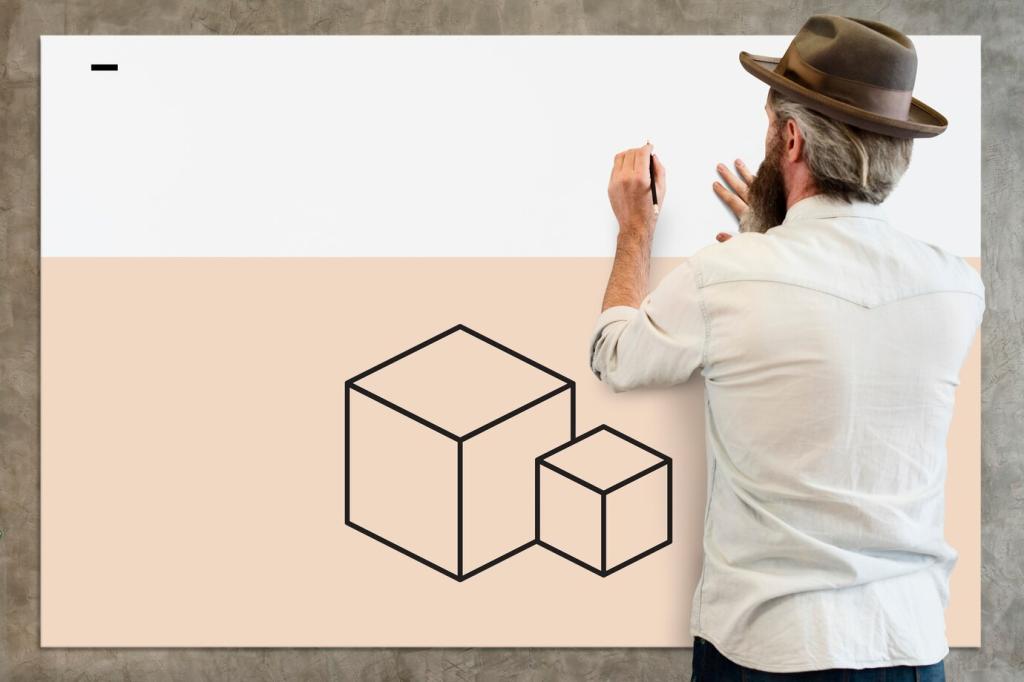Advantages of Minimalism in Home Design
Enhanced Sense of Space
01
Open floor plans are a hallmark of minimalism, as they remove barriers between different living areas. This seamless connectivity makes even smaller homes feel much more expansive. An open layout allows natural light to travel freely throughout the home, creating a bright and airy atmosphere that enhances comfort and visual appeal. Such designs foster social interaction while maintaining a sense of unity within the home.
02
Minimalist homes emphasize decluttering and careful curation of belongings. By minimizing decorative items, furniture, and unnecessary accessories, the space avoids feeling cramped or chaotic. A clutter-free environment supports mental clarity and emotional calm, as there are fewer distractions and visual interruptions. This focus on essentials can make every room appear tidy and thoughtfully arranged.
03
Minimalist spaces prioritize purposeful design, ensuring that every element serves a clear function. Multifunctional furniture, integrated storage, and streamlined layouts maximize the use of available space. This approach not only enhances practicality but also reinforces the sense of spaciousness, as each area feels intentional rather than crowded with underutilized or redundant items.
Improved Wellbeing and Mental Clarity
Stress Reduction
A visually calm home environment correlates closely with reduced stress levels. Minimalist interiors utilize neutral color palettes, clean lines, and purposeful decor, all of which contribute to a soothing atmosphere. By eliminating visual noise and excess, the mind can relax and recharge, making the home a true sanctuary from the outside world.

Easy Maintenance and Cleaning
Reduced Surfaces to Clean
In a minimalist home, services and surfaces are minimized and intentionally chosen. With fewer shelves, tables, and decorative objects, there are not as many places for dust and dirt to accumulate. This means that routine cleaning is less time-consuming, allowing more free time to spend on meaningful activities or relaxation.
Simplified Organization
Minimalism emphasizes practical storage solutions and limits on possessions. By having designated places for every essential item and foregoing unnecessary belongings, maintaining order becomes effortless. This simplicity translates into spending less time searching for things, sorting through clutter, or reorganizing spaces, leading to a home that’s consistently tidy.
Lower Maintenance Demands
Streamlined design often involves higher-quality finishes and materials that require only basic care. By choosing long-lasting, easily maintained surfaces and furnishings, homeowners can enjoy greater durability and reduced maintenance costs over time. The focus on quality over quantity ensures that upkeep remains straightforward and stress-free.
Previous
Next
Greater Sustainability
01
Reduced Waste Generation
A minimalist approach involves careful selection and retention of items, leading to less waste produced. Homeowners are less likely to buy temporary, disposable products or indulge in impulse purchases. Over time, this results in a smaller ecological footprint and more responsible use of resources.
02
Promotion of Quality Over Quantity
Minimalism prioritizes investing in fewer, higher-quality items that are built to last. This means less frequent replacement and a lower rate of disposal, which benefits the environment. Items that are durable and timeless not only serve for longer but also contribute to a more meaningful and intentional home.
03
Energy Efficiency
Simplified layouts and open spaces facilitate better airflow and natural light, reducing the need for artificial lighting and climate control. Minimalist designs often incorporate energy-efficient fixtures and materials, resulting in reduced utility consumption and a greener household overall.
Encouragement of Purposeful Living
Minimalist interiors demand careful selection of what is truly necessary or valued. This process naturally encourages occupants to reflect on their true needs and goals. Living in such a space reinforces the importance of prioritizing essentials, both materially and emotionally, which can lead to greater contentment.

Cost Savings and Financial Benefits
Lower Upfront Expenses
Minimalist principles advocate for buying less and choosing only what is essential. This translates to smaller shopping lists when furnishing or decorating a home, allowing homeowners to invest more thoughtfully in each purchase. The emphasis on quality over quantity may mean slightly higher costs per item, but leads to overall savings.


Reduced Maintenance and Utility Bills
Simplified spaces are easier to clean, maintain, and repair, which reduces ongoing costs. Energy-efficient designs and fewer electronic devices lower monthly utility bills. Fewer furnishings and accessories also mean spending less on replacements or repairs over time, making minimalist homes more budget-friendly in the long run.
